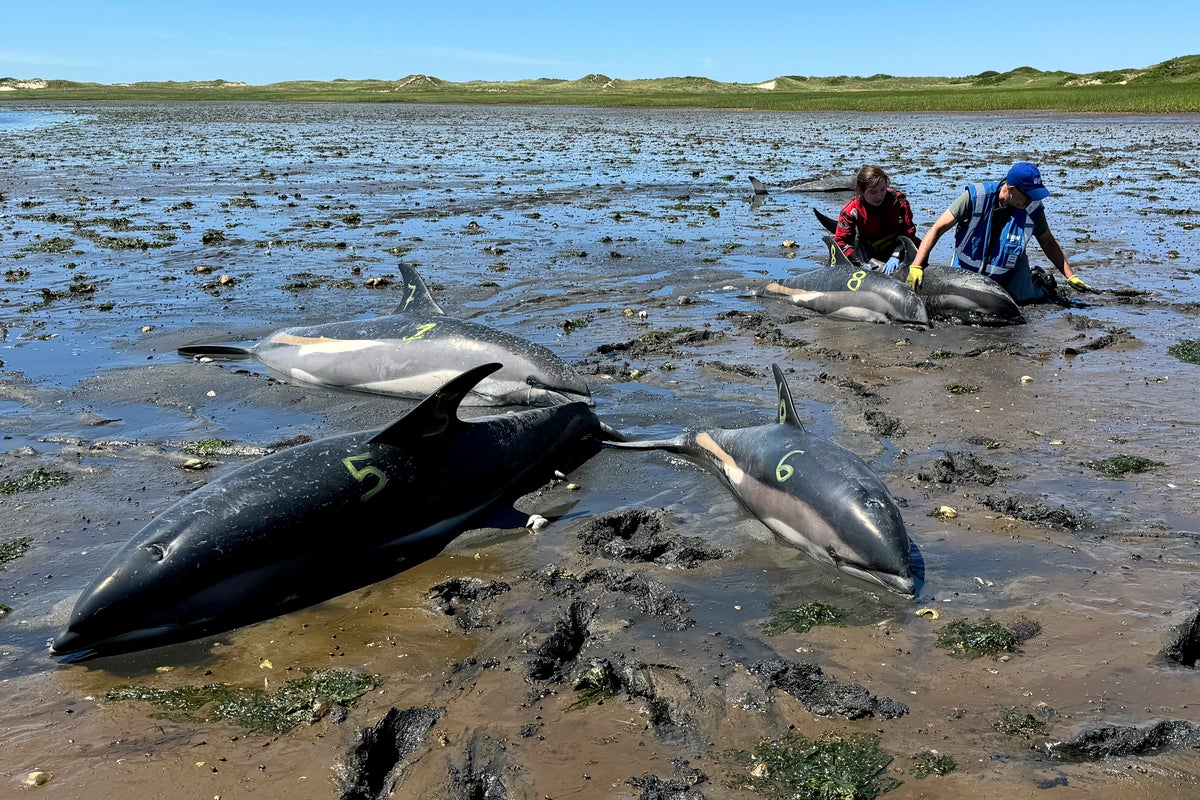
Support truly
independent journalism
The recent stranding of more than 100 dolphins on Cape Cod, the largest such event involving dolphins in U.S. history, is partly due to the peninsula's geography, with its gently sloping sand flats, tidal fluctuations and proximity to productive feeding grounds, experts said.
The elements, along with the hook-like shape of the cape itself, make Cape Cod a global hotspot for dolphin mass strandings.
Rescuers who helped free more than a hundred dolphins from the shoreline last month said Friday that they confirmed the mass stranding that began June 28 was the largest in the U.S.
A final review of data and aerial imagery last week revealed that 146 dolphins were involved in the stranding, according to the International Fund for Animal Welfare. The group estimated that 102 dolphins survived the multiday event. There were 37 natural deaths and seven dolphins had to be euthanized.
Brian Sharp, director of marine mammal rescue for the group, said dolphins strand more frequently along Cape Cod than along any other shoreline in the U.S.
The group looked at national data on dolphin strandings over 10 years and found that 25% of dolphins stranded in the U.S. became stuck on Cape Cod, most along a 16-mile stretch of coastline there. In 2012, the group responded to 32 mass strandings on the cape.
“We're not seeing any underlying diseases or injuries,” Sharp said.
The cape poses several challenges for dolphins including gently sloping beaches, beaches with fine sand, mud flats, and high and low tides that fluctuate by 9 to 12 feet. Dolphins swimming too close to shore at high tide can find themselves beached as the tide races out.
Those challenges can also make it harder for dolphins to rely on echolocation, he said.
While strandings typically happen from December through April, rescuers are seeing more mass strandings in the summer, according to Sharp, who said the group is trying to determine if climate change is a factor. He said fishermen have also reported seeing more bait fish that dolphins feed on moving closer to shore.
It's not just dolphins that become trapped in the fishhook topography of Cape Cod.
Sea turtles can also find their way into the cape during warmer months and then become trapped when the seasons turn and they try to head south for warmer waters.
'“They’re not looking at a map,” said Adam Kennedy, Director of the New England Aquarium’s Rescue and Rehabilitation Program. “They’re used to just open water.”
The turtles can become stunned by the cold water and float to the surface where they can be collected and brought in to be treated for dehydration and poor nutrition before ultimately being returned to warmer waters, Kennedy said. It can take weeks to months before a turtle can be released.
The number of rescued turtles is on the rise with an average of about 400 turtles a year being brought into the facility for help, One new factor is the warming of waters in the Gulf of Maine which can allow turtles to remain longer and get caught in the cape, Kennedy added.
Response efforts by rescuers have continued on a smaller scale including the rescue, relocation, and release of nine of the same Atlantic white-sided dolphins on July 2.
On that day, 11 dolphins were found stranded near Powers Landing in Wellfleet, Massachusetts. Two were euthanized, and nine were transported in a custom-built mobile dolphin rescue clinic vehicle. Satellite tags tracked several of these animals safely offshore.
Rescuers faced many challenges as they attempted to guide the dolphins back to open water, including difficult mud conditions and the dolphins being spread out over a large area.
During some rescue attempts workers started on foot, herding the creatures into deeper waters, and then used small boats equipped with underwater pingers, which make noise to help attract the dolphins.
The International Fund for Animal Welfare has also received reports from whale-watching vessels that have seen some of the dolphins — identified with temporary markings — now swimming among other groups of hundreds of other dolphins that had not been part of the stranding.







